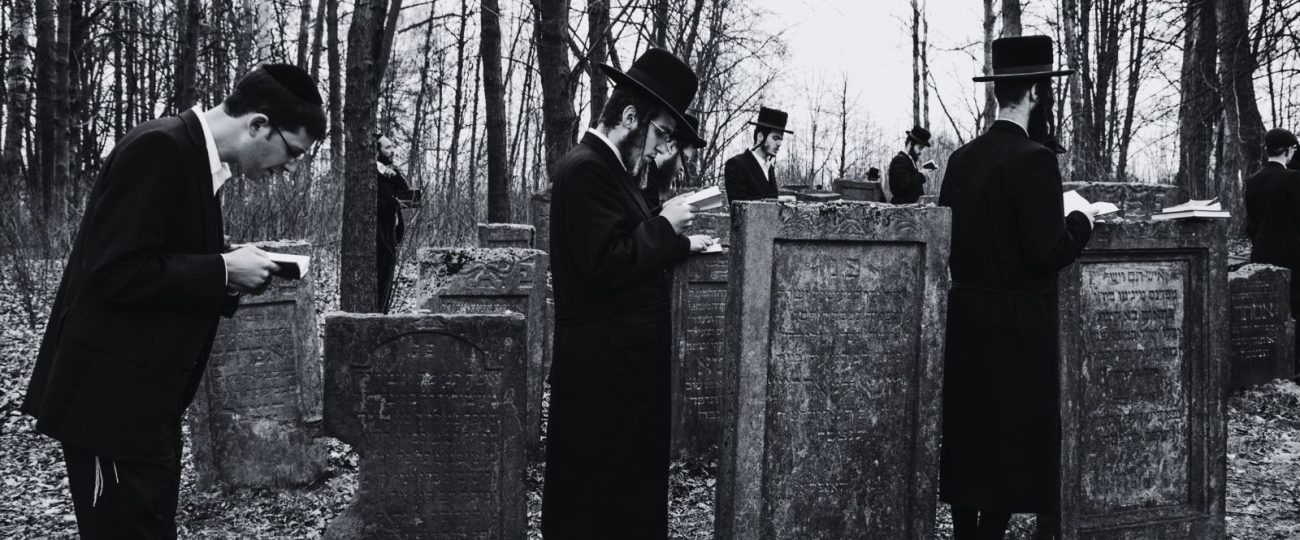What Happened On September 29th?
On September 29, 1941, the Nazis ordered the Jews of Kyiv to gather near the Jewish cemetery by 8 a.m., bringing only their identification, valuables, and essential clothing. The German occupiers deceived the Jews, claiming they would be relocated. Jewish families, trapped under Nazi rule, followed the directive without knowing they were heading to their deaths at Babi Yar. A misleading tactic like this wasn’t new for the Nazis—they had used similar strategies to prevent mass panic during other operations in occupied territories.
As families marched through Kyiv’s streets, German soldiers and Ukrainian collaborators watched them closely. Kyivans observed from their windows but chose not to intervene. Some assumed the Jews were being deported to labor camps, while others feared something far worse. The atmosphere of fear and uncertainty allowed the Nazis to carry out their plans without interruption. The silence of the onlookers mirrored that seen in other parts of Europe during Nazi deportations, as the risk of reprisal kept people in hiding. The Nazis understood the power of fear to keep the public subdued, which made their gruesome task easier.
When the Jews arrived at the cemetery, Nazi soldiers funneled them through checkpoints, confiscated their belongings, and gave no explanation. The soldiers directed the Jews toward Babi Yar, a ravine on the outskirts of the city. The march exhausted many, especially the elderly, children, and the infirm. As they approached the ravine, they saw piles of discarded clothes from earlier victims, giving a grim warning of what awaited them. Among those who had marched were World War I veterans, who had fought for the Russian Empire and were once hailed as patriots, now reduced to victims of this systematic slaughter.
At Babi Yar, the Einsatzgruppen and Ukrainian police forced the Jews to undress and walk to the edge of the ravine. The squads shot them in groups and pushed their bodies into the pit. The constant sound of gunfire echoed through the area as the bodies piled up. The natural depth of the ravine allowed the executions to proceed quickly and efficiently. By late afternoon, thousands of bodies filled the ravine. What many don’t realize is that the Germans even brought in bulldozers to hasten the covering of the bodies—an eerie example of the chilling efficiency with which the Nazis operated during their genocidal campaigns.
The Nazis had planned the massacre in detail. They operated in shifts to keep the killing machine running without pause. By nightfall, they had killed over 20,000 Jews. These tactics mirrored earlier operations in Eastern Europe, where SS General Friedrich Jeckeln had overseen similar atrocities. Jeckeln brought this experience to Babi Yar, maintaining brutal efficiency. The killing paused overnight but resumed at dawn with the same cold precision. Jeckeln’s methods emphasized speed and secrecy, ensuring that operations like Babi Yar could be carried out before any possible resistance or rescue could occur.
The Nazis chose Babi Yar because its depth allowed them to hide the bodies easily while its location minimized transportation issues. Residents nearby heard gunfire and screams throughout the day. Though some saw the marches, fear of retaliation kept them from taking any action. The German-imposed curfew kept locals away, and the complicity of some allowed the massacre to continue without interference. Kyiv itself had been rocked by explosions days earlier, detonated by Soviet NKVD agents to sabotage German military operations. The Nazis cynically blamed these attacks on the Jewish population, further justifying their murderous actions.
Before the massacre, Nazi propaganda had falsely accused the Jews of sabotage, using explosions caused by Soviet mines as a pretext. This accusation, combined with deep-seated antisemitism, inflamed hatred against the Jewish population. The Nazis recruited Ukrainian collaborators, who eagerly helped round up Jews and man checkpoints. These collaborators actively participated in the killings, showing how the regime exploited local prejudices. German officers documented every aspect of the massacre, including detailed counts of the ammunition used—viewing the murder of thousands as an administrative task.
The Nazis treated the massacre as a systematic process. They documented the number of victims and the ammunition used, reducing the victims to mere statistics. The Germans approached the massacre as an operation to be managed efficiently, showing no regard for human life. This cold, calculated approach revealed the bureaucratic cruelty that drove the genocide. Remarkably, they ordered prisoners to stack the bodies in layers, maximizing the space in the ravine. This grotesque efficiency in stacking the dead remains one of the most haunting aspects of Babi Yar’s brutality.
Babi Yar became the site of further mass killings after September 29th. The Nazis continued executing Soviet prisoners of war, Roma people, and Ukrainian nationalists in the months that followed. While the ravine absorbed more victims, the sheer scale and speed of the Jewish massacre remained unparalleled. In just 48 hours, the Nazis killed over 34,000 Jews at Babi Yar, making it one of the deadliest mass shootings in the Holocaust. The speed with which the bodies piled up overwhelmed even the executioners, who required additional logistical adjustments, including the use of explosive devices, to manage the body count.
A few survivors, despite overwhelming odds, managed to escape the massacre. Dina Pronicheva, a Jewish actress, survived by pretending to be dead after being shot. She lay still beneath the bodies, waiting until nightfall to crawl out of the ravine and flee. Her testimony later provided one of the few firsthand accounts of the massacre. Her escape, though rare, showed the strength and resilience of those who survived. Pronicheva, later hidden by non-Jewish friends, lived through several attempts on her life as collaborators sought to root out survivors, further highlighting the danger facing those who evaded immediate death.
Nazi propaganda helped justify the massacre to the public. By accusing Jews of sabotage, the Nazis provided an excuse for their extermination plans. Many locals, influenced by long-standing antisemitism, supported or accepted the actions of the Nazis. Ukrainian collaborators assisted the Germans in rounding up and killing the Jews, playing a direct role in the slaughter. The Nazi leadership turned the cruelty at Babi Yar into a horrifyingly efficient process, revealing their total disregard for human life.





